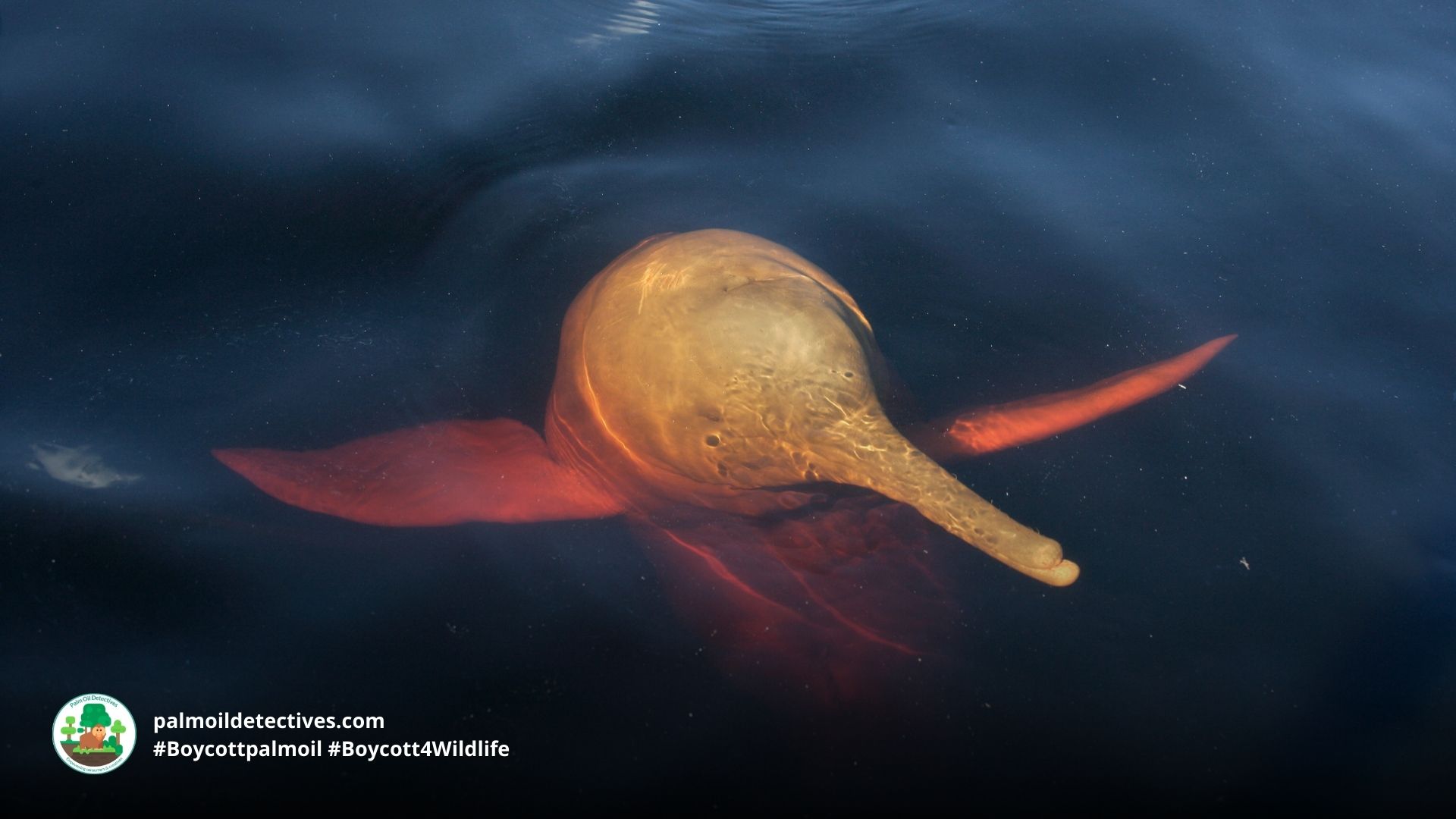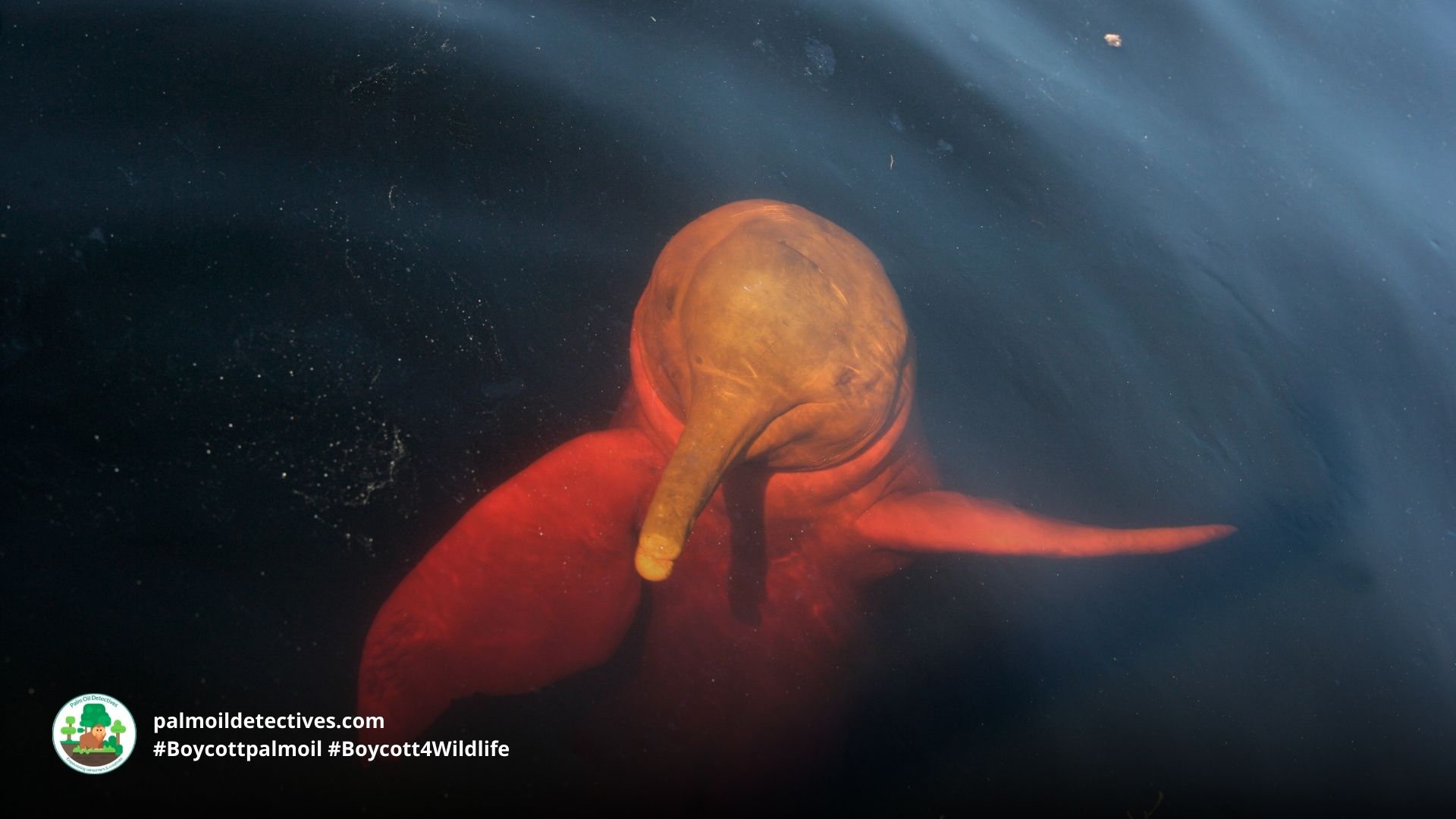Amazon River Dolphin Inia geoffrensis
Endangered
Extant (resident)
Bolivia; Brazil; Colombia; Ecuador; Peru; Venezuela.
The Amazon River dolphins, also known as the Boto Dolphins or Amazon Pink River Dolphins are playful, curious and intelligent mammals, the largest river dolphin species in the world. Known for their stunning pink coloured skin they are endangered due to human-related threats like #palmoil, #meat and #soy #deforestation, #gold #mining and #pollution. Help them survive each time you shop and use your wallet as a weapon. Be #vegan, #Boycottpalmoil and #Boycott4Wildlife
Beautiful, playful and curious pink Amazon River Dolphins of #Brazil and #Peru are #endangered by #palmoil #meat #soy #agriculture #gold #mining and other threats. Help save them and be #vegan #Boycottpalmoil #Boycott4Wildlife
Tweet
Pink #Amazon River Dolphins of #Venezuela #Brazil and Ecuador are legendary for their playful intelligence, don’t let them disappear. Fight for them and use your wallet as a weapon #Boycottpalmoil #Boycott4Wildlife
Tweet
Communication
Amazon River Dolphins are typically solitary or move in groups of 2-3 individuals. However, they have been found to gather in groups of up to 15-30 individuals and congregate together in order to hunt prey during their most active times: dusk and dawn. They are highly communicative, playful and curious animals and will investigate the arrival of boats on the river.
They communicate through gestures like rolling, lob tailing and flipper waving to other dolphins. They are highly playful and have been known to toy with underwater grass, floating logs, turtles and fish.
The murky water of Amazonian rivers means that echolocation is key for them to navigate and find prey in mangroves and flooded forests.

Appearance & Behaviour
They have possess a long, plump and flexible body with fins that are reminiscent of paddles and dorsal fins that have a ridge. They stand out from other dolphin species due to their striking colours which range from grey to pink to white.
Amazon River Dolphins are the world’s largest river dolphin species and can reach a length of 2.55m and 185 kg for males and 2.15m and 150kg for females.
They are incredibly flexible due to some of their vertebrae being unfused, this means that they can swivel their heads in almost any direction. Countless Amazonian tribes have rich folklore, myth and legend related to these dolphins including one prominent tale where the Amazon River Dolphin shapeshifts into a handsome man in order to seduce young women into the water.
Their body colour varies with juvenile dolphins being dark grey. They transform to lighter grey and pink due to repeated abrasive encounters and intraspecies aggression with other dolphins. Colour is also believed to be related to water transparency, temperature and geographic location.
Their teeth vary in size and shape (they are hererodonts), this enables them to grab and crush prey. They breath every 30-110 seconds and prefer to stay close to the surface rather than dive deeply.







Threats
The Tocantins-Araguaia Basin has been significantly altered over the past few decades by dams, deforestation for cattle ranching, logging, road building, and the use of Agent Orange to clear pathways for power lines (Siciliano et al. 2016b).
IUCN RED LIST
Amazon River Dolphins are threatened by:
- Hydroelectric dams on Amazonian rivers: The draining of dams means that prey species of the dolphin are not available.
- Fishing: Either intentional or unintentional injury or death as a result of boats and fishing nets.
- Agricultural pollution run-off and ecocide: From cattle grazing, soy and palm oil agriculture.
- Gold mining: Mercury pollution run-off destroying river ecosystems.
- Human persecution: Fishermen see them as competition for fish and kill them deliberately.


Habitat
The Amazon River Dolphin is a river dwelling mammal who lives in the drainage basins of the Orinoco and Amazon Rivers. They also live in the rivers and streams with a slow current and they harness the natural flooding season of the mangrove and forest river ecosystems for their breeding.
Diet
The Amazon River Dolphin has a wide ranging diet and feeds upon dozens of species of fish, river turtles, frogs and crabs.
Mating and breeding
Unlike other species of dolphin (which favour females being larger than males), Amazon River Dolphins have noticeably larger males than females. Males display aggressive behaviour to one another and bite, damaging each other’s fins, flukes and blow-holes.
This aggression is related to mating rights with females. Typically, both males and females have a number of different mates (polyandry). The breeding season is between October and November and once pregnant the mother will have a gestation period of 11 months. A mother will give birth typically once every five years.
Once the baby is born, the mother will help her baby to come to the surface for air and the mother will nurse the baby for up to a year after birth, with the youngster becoming fully independent within 2-3 years. Females reach sexual maturity between 6-10 years old, with males starting a little later: 7-12 years old.
The birthing season is around May to June and this coincides with the annual flooding of the forest which provides an advantage for the infant as more food is available during this time than at other times of the year. This helps the baby to grow rapidly.
The long period of breastfeeding and maternal care indicates a strong mother-baby bond and that learning during this period is complex.
Support Amazon River Dolphins by going vegan and boycotting palm oil and gold, it’s the #Boycott4Wildlife
You can support this beautiful animal
The Amazon River Dolphin Conservation Foundation

Further Information
da Silva, V., Trujillo, F., Martin, A., Zerbini, A.N., Crespo, E., Aliaga-Rossel, E. & Reeves, R. 2018. Inia geoffrensis. The IUCN Red List of Threatened Species 2018: e.T10831A50358152. https://dx.doi.org/10.2305/IUCN.UK.2018-2.RLTS.T10831A50358152.en. Accessed on 31 October 2022.
Amazon River Dolphin, Wikipedia
Amazon River Dolphin, Animalia.bio
Read more about Gold Mining in the Amazon and why you should #BoycottGold4Yanomami and #Boycott4Wildlife
13 Reasons Why You Should Boycott Gold For The Yanomami People
Hunger for Gold in the Global North is fueling a living hell in the Global South. Here are 20 reasons why you should #BoycottGold4Yanomami
Read more
How can I help the #Boycott4Wildlife?
Contribute in five ways
1. Join the #Boycott4Wildlife on social media and subscribe to stay in the loop: Share posts from this website to your own network on Twitter, Mastadon, Instagram, Facebook and Youtube using the hashtags #Boycottpalmoil #Boycott4Wildlife.
2. Contribute stories: Academics, conservationists, scientists, indigenous rights advocates and animal rights advocates working to expose the corruption of the palm oil industry or to save animals can contribute stories to the website.
3. Supermarket sleuthing: Next time you’re in the supermarket, take photos of products containing palm oil. Share these to social media along with the hashtags to call out the greenwashing and ecocide of the brands who use palm oil. You can also take photos of palm oil free products and congratulate brands when they go palm oil free.
4. Take to the streets: Get in touch with Palm Oil Detectives to find out more.
5. Donate: Make a one-off or monthly donation to Palm Oil Detectives as a way of saying thank you and to help pay for ongoing running costs of the website and social media campaigns. Donate here
Here are some other ways you can help by using your wallet as a weapon and joining the #Boycott4Wildlife
Contribute to my Ko-Fi
Did you enjoy visiting this website?

Palm Oil Detectives is 100% self-funded
Palm Oil Detectives is completely self-funded by its creator. All hosting and website fees and investigations into brands are self-funded by the creator of this online movement. If you like what I am doing, you and would like me to help meet costs, please send Palm Oil Detectives a thanks on Ko-Fi.

















Thanks Ned for sharing
LikeLike
Reblogged this on UNIVERSE.
LikeLiked by 1 person
thank you friends. cheers and a big hug. 🙂
LikeLiked by 1 person
Thanks dear Mary for the share xx
LikeLiked by 2 people